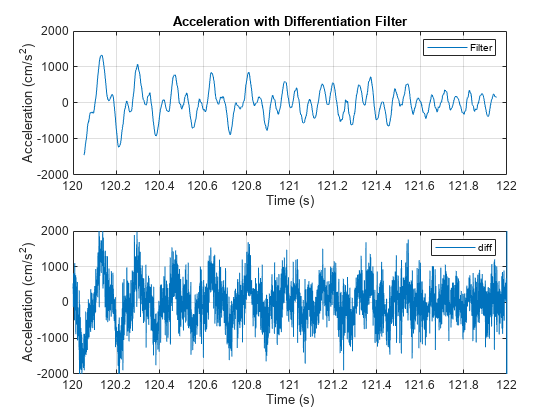
"A Geometric Construction of Multivariate Sinc Functions".
^ Robert Baillie David Borwein Jonathan M. Washington, DC: Mathematical Association of America. "A highly efficient Shannon wavelet inverse Fourier technique for pricing European options". That is, sin()/ cos() for all points where the derivative of sin(x)/x is zero and thus a local extremum is reached. Above is the most basic function of plotting spectrogram. Probability and information theory, with applications to radar. so this function in MATLAB directly does the STFT and plot the input signal as spectrogram. Also a function 'derivest' could also give numerical differentiation. Proceedings of the IEE - Part III: Radio and Communication Engineering. To get a numerical difference (symmetric difference), you calculate (f (x+dx)-f (x-dx))/ (2dx) or 'gradient', 'polyder' (calculates the derivative of a polynomial) functions. First- and second-order complex step derivative approximation. "Information theory and inverse probability in telecommunication" (PDF). Halley’s method is a root-finding algorithm used for functions of one real variable with a continuous second derivative. Communication Systems, 2E (illustrated ed.). (2010), "Numerical methods", NIST Handbook of Mathematical Functions, Cambridge University Press, ISBN 978-5-5, MR 2723248. Whittaker–Shannon interpolation formula Fractional Derivatives, Fractional Integrals, and Fractional Differential Equations in Matlab Ivo Petrá Technical University of Ko ice Slovak Republic 1.Introduction The term fractional calculus is more than 300 years old. This construction can be used to design Lanczos window for general multidimensional lattices. > dydt=diff(y).Part of the normalized sinc (blue) and unnormalized sinc function (red) shown on the same scale There are 6 values for t and have to plot the curve y(t)=(t/2)2 also plot the derivative of the adjacent points. Use f and y as the parameters of functionalDerivative. Declare y (x) as a symbolic function and define f as the integrand of S. central difference –to map the slope to the midpoint use xp=x(1:end-1) + diff(x)./2Īnother Example for better understanding - Forward, Backward, and Central Difference Illustrated ADMAT (Automatic Differentiation for MATLAB) implements AD using the object oriented technology in MATLAB 11 and can compute derivatives of up to second order. Find the functional derivative of the functional S y b a y ( x) sin ( y ( x)) d x with respect to the function y, where the integrand is f y ( x) y ( x) sin ( y ( x)).  backward difference – to map the slope to the end point use xp=x(2:end).
backward difference – to map the slope to the end point use xp=x(2:end).  forward difference –to map the slope to the beginning point use xp=x(1:end-1). Using derivative boosts noise and in feedback systems its a perfect call for. Term s alone would grow infinitely along the frequency. At low enough frequencies that block approximates the derivative, but does not boost high frequencies. Since calculating the slope of a line segment, someone can map the slope to one of three x values: Matlab quidance tries to suggest to replace the derivative by a block which is like RC-high-pass filter. When using yp=diff(y)./diff(x) it is necessary to map it to an associated x value. Numerical derivative - diff(y)./diff(x) will give the slope of each interval for the lists of x and y valuesįor example: x = y= dydx=diff(y)./diff(x) →. If y is a vector of symbolic functions, functionalDerivative returns a vector of functional derivatives with respect to the functions in y, where all functions in y. The functional derivative is also known as the variational derivative. MATLAB has special command diff that takes a list of numbers and calculates the difference between each adjacent number.įor example: y = dy = diff(y) →. The functional derivative relates the change in the functional Sy with respect to a small variation in y(x). Numerical Differentiation A numerical approach to the derivative of a function ()is: Note We will use MATLAB in order to find the numericsolution not the analytic solution The derivative of a function () is a measure of how changes with.
forward difference –to map the slope to the beginning point use xp=x(1:end-1). Using derivative boosts noise and in feedback systems its a perfect call for. Term s alone would grow infinitely along the frequency. At low enough frequencies that block approximates the derivative, but does not boost high frequencies. Since calculating the slope of a line segment, someone can map the slope to one of three x values: Matlab quidance tries to suggest to replace the derivative by a block which is like RC-high-pass filter. When using yp=diff(y)./diff(x) it is necessary to map it to an associated x value. Numerical derivative - diff(y)./diff(x) will give the slope of each interval for the lists of x and y valuesįor example: x = y= dydx=diff(y)./diff(x) →. If y is a vector of symbolic functions, functionalDerivative returns a vector of functional derivatives with respect to the functions in y, where all functions in y. The functional derivative is also known as the variational derivative. MATLAB has special command diff that takes a list of numbers and calculates the difference between each adjacent number.įor example: y = dy = diff(y) →. The functional derivative relates the change in the functional Sy with respect to a small variation in y(x). Numerical Differentiation A numerical approach to the derivative of a function ()is: Note We will use MATLAB in order to find the numericsolution not the analytic solution The derivative of a function () is a measure of how changes with.








